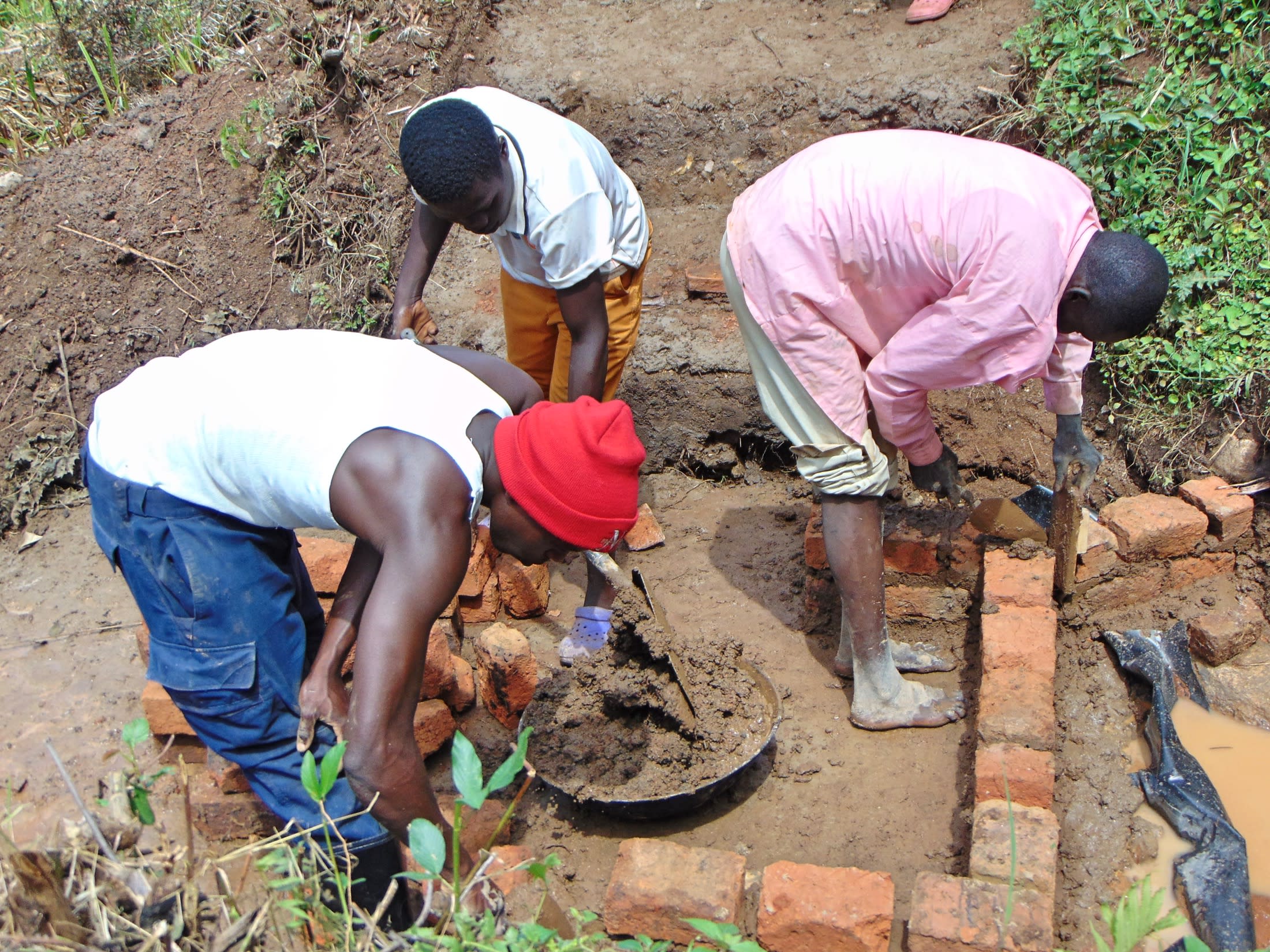It's obvious from the pictures that no one would fetch water from Nambale Spring if they had any other option. But for the 315 members of Muchini Community, this is all they have.
Due to the treacherous terrain, shallow water, and unkempt surroundings, fetching water here takes an inordinate amount of time. Community members fight their way through thick bushes and crouch in a dug-out trench to scoop up water one small pitcher-full at a time, feet mired in thick mud all the while.

"Nothing irritates me like fetching water from this spring," said 40-year-old farmer, Florenca Barasa (pictured above at the spring). "Accessing, drawing the water, and finding your way out is a whole hell on earth."
Florence also told us her mother-in-law twisted her ankle while trying to access Nambale Spring. Still, water vendors visit the spring up to ten times each day and sell the water in more populated areas. This is telling, because if there were any other option, surely they wouldn't brave the hazardous route to scoop water here.
Those are just the problems with acquiring the water. But because it's an open source, ingesting the water also causes significant health issues, namely cholera, typhoid, and chronic diarrhea.
In an effort to curb the cases of water-related illness, the community members try hard to fetch water carefully. But even the clearest water can still make people sick.
"Many times, I wish to help my mum with fetching water, but my mum stops me because she believes I will not be able to scoop the water without making it dirty," said nine-year-old Joab (pictured below).

Joab's mother is trying to protect him and the rest of their family from illness. But until the spring is protected, no amount of careful scooping will prevent waterborne sickness. That's where we come in.
What We Can Do:
Spring Protection
Protecting the spring will help provide access to cleaner and safer water and reduce the time people have to spend to fetch it. Construction will keep surface runoff and other contaminants out of the water. With the community’s high involvement in the process, there should be a good sense of responsibility and ownership for the new clean water source.
Fetching water is a task predominantly carried out by women and young girls. Protecting the spring and offering training and support will, therefore, help empower the female members of the community by freeing up more of their time and energy to engage and invest in income-generating activities and their education.
Training on Health, Hygiene, COVID-19, and More
To hold trainings during the pandemic, we work closely with both community leaders and the local government to approve small groups to attend training. We ask community leaders to invite a select yet representative group of people to attend training who will then act as ambassadors to the rest of the community to share what they learn. We also communicate our expectations of physical distancing and wearing masks for all who choose to attend.
The training will focus on improved hygiene, health, and sanitation habits in this community. We will also have a dedicated session on COVID-19 symptoms, transmission routes, and prevention best practices.
With the community’s input, we will identify key leverage points where they can alter their practices at the personal, household, and community levels to affect change. This training will help to ensure participants have the knowledge they need about healthy practices and their importance to make the most of their water point as soon as water is flowing.
Our team of facilitators will use a variety of methods to train community members. Some of these methods include participatory hygiene and sanitation transformation, asset-based community development, group discussions, handouts, and demonstrations at the spring.
One of the most important issues we plan to cover is the handling, storage, and treatment of water. Having a clean water source will be extremely helpful, but it is useless if water gets contaminated by the time it is consumed. We and the community strongly believe that all of these components will work together to improve living standards here, which will help to unlock the potential for these community members to live better, healthier lives.
We will then conduct a small series of follow-up trainings before transitioning to our regularly scheduled support visits throughout the year.
Training will result in the formation of a water user committee, elected by their peers, that will oversee the operations and maintenance of the spring. The committee will enforce proper behavior around the spring and delegate tasks that will help preserve the site, such as building a fence and digging proper drainage channels. The fence will keep out destructive animals and unwanted waste, and the drainage will keep the area’s mosquito population at a minimum.

 Protected Spring
Protected Spring
 Rehabilitation Project
Rehabilitation Project







































